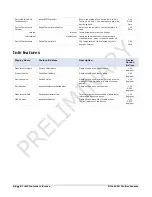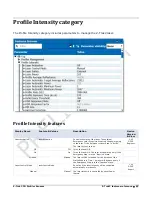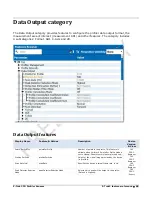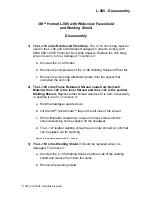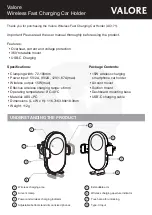
Z-Trak2 3D Profiler Sensors
Multi-sensor systems
•
55
Multi-sensor systems
Several Z-Trak profiler sensors may be configured over or around a target object to enlarge the
measurement area, to measure different areas of interest, or to eliminate occlusion. In some
cases, profile acquisition may be triggered synchronously or in sequence between sensors. In other
cases, a larger, unified measurement space (UMS) can be created, such that all sensors report
measurements within the same coordinate system.
Connecting multiple 3D sensors
A single sensor may be connected directly to a host through a NIC, or indirectly through a switch.
In multi-sensor configurations, the sensors will typically be connected to a host through a switch.
•
Standalone sensors
—
Sensors gather and process profiles independently, on one or on
different hosts. Each sensor may be connected to a switch or to a NIC.
•
Synchronized sensors
—
Synchronization between sensors relies on Internet messages. A
switch is therefore required to forward timing messages to sensors connected to it. Profiles may
be processed on the same or on different hosts.
•
Sensors part of a unified measurement space (UMS)
—
Units must be attached to the
same switch, and a single host must do the acquisition and merging. The units will typically be
synchronized.
Sensor synchronization
Sensor synchronization is used to coordinate the profile acquisition of a group of sensors so that
they are triggered simultaneously or sequentially. Sequential acquisition is recommended if the
laser line emitted by a sensor can interfere with another sensor during acquisition if they are
triggered simultaneously.
When synchronizing sensors, one is chosen as the master sensor, that will respond to the external
signal. There can be multiple slave sensors synchronized to one master.
Each slave sensor’s
Trigger Start Source is set to the Multi Sensor Sync value, indicating that the slave will acquire
profiles when it receives messages from the master.
Synchronization is achieved essentially by adjusting trigger delays between the sensors. Because
synchronization relies on Internet messages, the master sensor must allow for a delay to forward
timing messages to the slave sensors; this delay is represented by the Multi-Sensor Sync Group
Trigger Delay parameter.


























